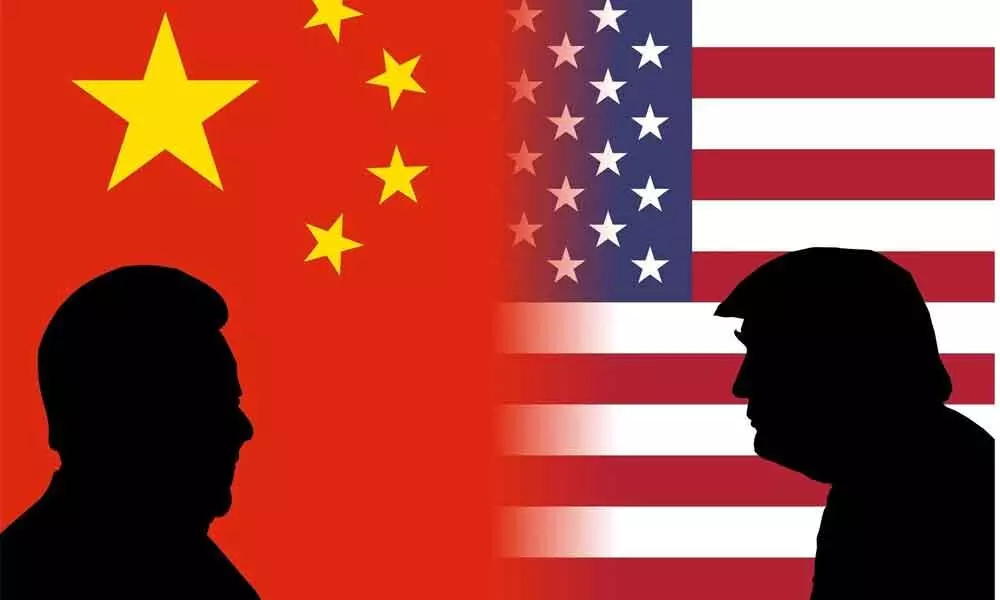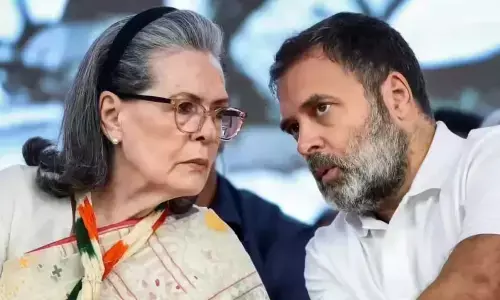China and the US: Whom to befriend?

Two hundred years ago the share of India in the world income was 25 percent and China's was 33 percent. That declined to 1 percent and 2 percent respectively in 1950.
Another critical difference is that of debt. China has provided large amounts of loans to the US. It has purchased about 15 percent of Treasury Bonds issued by the United States directly. It has also invested large amounts in other countries which, in turn, have provided loans to the US. Thus, China stands above the US in terms of debt just as the donor stands above a recipient. More importantly, the US debt is increasing rapidly. Thus, the US is losing its lead in technologies and in financial prowess while China is gaining on both counts. The US is in the sunset phase while China is in the sunrise phase.
Two hundred years ago the share of India in the world income was 25 percent and China's was 33 percent. That declined to 1 percent and 2 percent respectively in 1950. These have since increased to 4 percent and 15 percent today. Even this improved share is anomalous because India's population is 126 crores and China's is 136 crores. In comparison, the United States accounts for 25 percent of the world income today while its population is merely 36 crores. Thus, one percent share of the global income that accrues in India is shared by 31 crore persons; if it accrues in China, then it is shared by 9 crore persons; and if it accrues in the US then it is shared by only 1.3 crore persons. The challenge before India is to secure a share of global income in proportion to our population. We have to examine whether this will be facilitated if we befriend China against the US or befriend the US against China.
Befriending the US will get us advanced technologies. The US remains the leading technology innovator although China has surpassed it in the filing of patents before the World Intellectual Property Organisation. The US filed 58,000 patent applications in 2019 while China filed 59,000 applications with India filing 30,000 applications. The US nevertheless remains in the front of technological innovations because of its large hoard of patented technologies innovated by that country in the past. On the other hand, befriending China may not get us as much access to the advanced technologies because China is rather protective about them. The basic symbiosis between China and India is in China's strength in manufacturing and India's strength in services like software development, medical transcription, translations and typesetting. A combination of China's manufacturing with India's services can give us an edge over the US. The trade-off is that befriending the US will get us technologies while befriending China may get us the world markets.
Another critical difference is that of debt. China has provided large amounts of loans to the US. It has purchased about 15 percent of Treasury Bonds issued by the United States directly. It has also invested large amounts in other countries which, in turn, have provided loans to the US. Thus, China stands above the US in terms of debt just as the donor stands above a recipient. More importantly, the US debt is increasing rapidly. Thus, the US is losing its lead in technologies and in financial prowess while China is gaining on both counts. The US is in the sunset phase while China is in the sunrise phase.
The main difficulty in befriending China is that country's occupation of Tibet and its 1962 war against India. But before we deal with this matter, we must examine the record of the two contenders. The US has made following wars in the last 100-odd years excluding the two World Wars: 1912 Nicaragua, 1915 Haiti, 1916 Dominican Republic, 1950 Korea, 1953 Laos, 1958 Lebanon, 1961 Cuba, 1965 Vietnam, 1965 Dominican Republic (again), 1967 Cambodia, 1983 Grenada,1986 Libya, 1989 Panama, 1990 Kuwait, 1992 Somalia, 1992 Bosnia, 1994 Haiti, 1998 Kosovo, 2001 Afghanistan, 2003 Iraq, 2007 Somalia, 2011 Libya (again), 2011 Uganda, 2014 Syria, 2015 Yemen, 2015 Libya (again). In comparison China has made following wars: 1950 Tibet, 1950 Korea, 1959 Vietnam, 1962 India, 1969 Russia, 1979 Vietnam and 2020 India (again). The US had made about 26 wars away from its border except minor skirmishes with Mexico that were soon resolved. In contrast, China has only made wars near her borders and, to my knowledge, excepting Tibet, it has not captured land of any country. An article of this length does not permit to dwell on the merits of these wars. That said I may assure the reader that I have spoken with a number of persons from Latin America and they consistently feel that the US has invaded their countries only to install puppet regimes favourable to it. It is clear that the US has launched large numbers of wars and always away from its own land. That said, we must appreciate the US' help to India. British Prime Minister Winston Churchill had gone to meet US President Roosevelt to seek his help in the war against Germany. Roosevelt had agreed to help only if Britain committed to free the colonies including India after the war. Again, the US provided us with free grains under PL480 programme during the 1964 famine in India. But the situation has changed dramatically now. India is having to buy expensive oil because she has sided with the US against Iran, for example.
A number of scholars maintain that Tibet was independent during the Chinese Ming Dynasty from 1368 to 1644, and was subordinate to the Qing dynasty from 1644 to 1912; and again independent from 1912 to 1950. The justification of China's conquest of Tibet rests on the nature of independence between 1912 and 1950. But it is clear that Tibet was not historically independent from China for about three centuries before 1912. I am not supporting China's occupation of Tibet, but we must be aware of the facts before we make up our minds. Now coming to the 1962 war with India, Neville Maxwell has traced in detail in his book India's China War that the war was precipitated by Indian Defense Minister Krishna Menon's "forward policy" under which India advanced into the undemarcated land.
Three points are clear. The challenge before us is to secure share of global income in proportion to our share in the global population. Two, the US economy is in the sunset phase while that of China is in the sunrise phase. Three, the US has made about 26 wars in the last 100 years and stands against our economic interests today.
In regard to China, we should take lesson from Germany and France. Germany had occupied France during the Second World War but today they are close allies.
If we befriend the US, we can get more advanced technologies, but it is uncertain how long this will sustain; and we will have tow the US line and sacrifice our economic interests. On the other hand, if we befriend China, we can benefit from the symbiosis between China's manufacturing and India's services. The caveat is that friendship survives only between equals. Thus, we must set our house in order; impose heavy import duties on Chinese goods; strengthen our own research capabilities and then make arm's length friendship with China.
(The writer is formerly Professor of Economics at IIM, Bengaluru)












